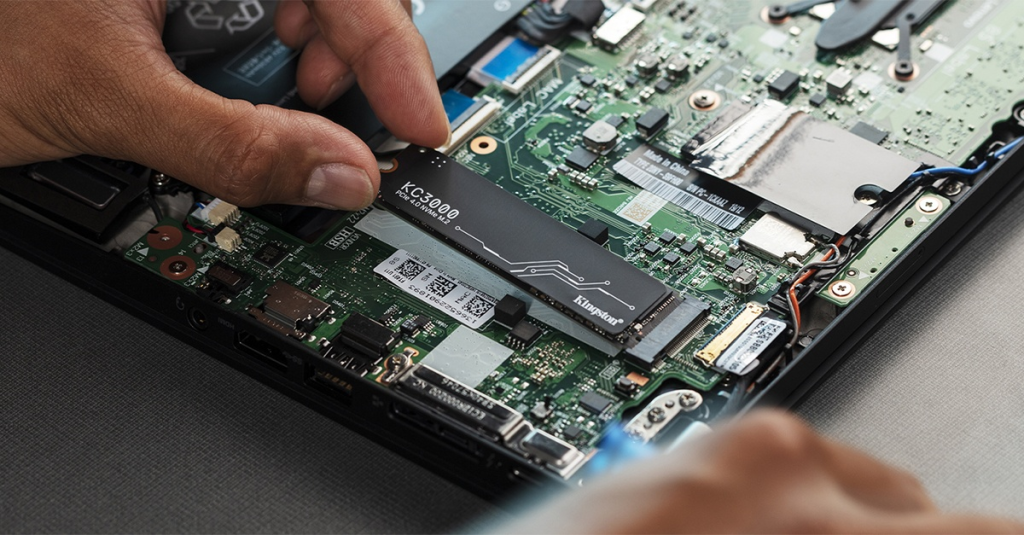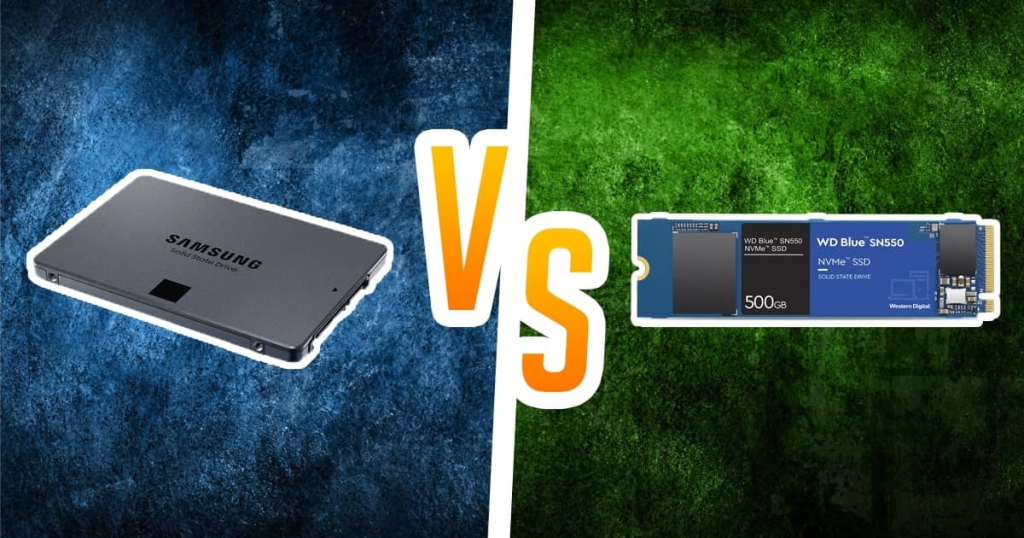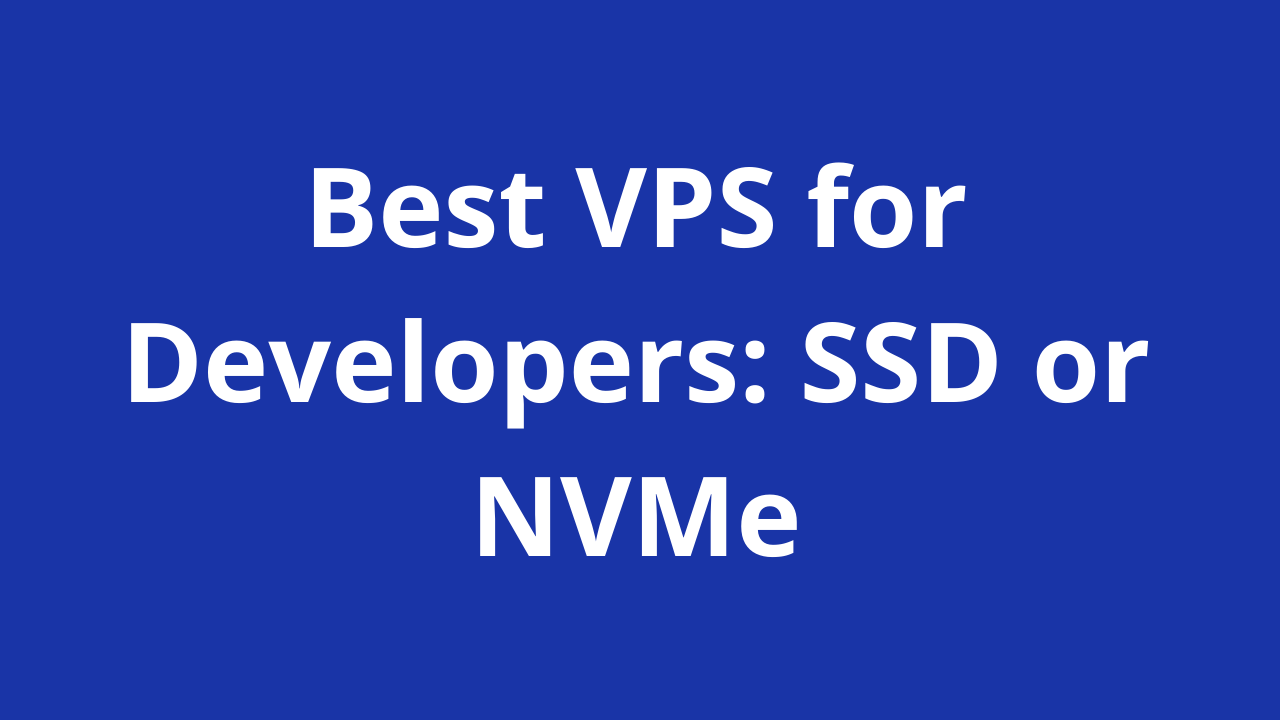The digital world is constantly evolving, demanding faster processing VPS speeds and quicker access to data. In response, storage technology has undergone a significant transformation, with solid-state drives (SSDs) emerging as the preferred choice over traditional hard disk drives (HDDs). But within the realm of SSDs, another innovation called NVMe promises even more impressive data transfer speeds. This blog post delves into the key differences between SSDs and NVMe, equipping you with the knowledge to choose the optimal storage solution for your needs.
Table of Contents
A Deep Dive into Solid State Drives (SSDs) For VPS

Imagine a computer that boots up in seconds, applications launch instantaneously, and multitasking feels effortless. That’s the magic of SSDs. Unlike HDDs, which rely on spinning platters and read/write heads to access data, SSDs utilize flash memory chips to store information. This lack of moving parts translates into several advantages for SSDs:
- Blazing-Fast Speeds: Forget the agonizing wait times associated with HDDs. SSDs boost significantly faster read and write speeds, allowing you to boot up your computer, open programs, and transfer vps files in a fraction of the time.
- Enhanced Responsiveness: With data readily available at their fingertips, SSDs provide a much more responsive user experience. Whether you’re browsing the web, working on documents, or editing photos, everything feels smoother and snappier.
- Improved Durability: The absence of moving parts makes SSDs less susceptible to physical damage compared to HDDs. This is particularly beneficial for laptops and portable devices that are more prone to bumps and jostles.
- Reduced Power Consumption: SSDs require less power to operate than HDDs, leading to improved battery life for laptops and lower energy bills for desktops.
While SSDs offer a plethora of benefits, it’s important to consider their limitations:

- Cost per Gigabyte: Generally, SSDs have a higher cost per gigabyte compared to HDDs. However, the price gap has been narrowing in recent years.
- Lifespan: SSDs have a limited lifespan compared to HDDs. This is because flash memory has a finite number of write cycles before it wears out. However, modern SSDs are designed to last for several years under normal usage, and advancements in technology are continuously extending their vps lifespan.
NVMe: The Next Frontier in SSD Technology

Non-volatile memory express (NVMe) is a revolutionary communication protocol designed specifically for SSDs. It acts as a language that enables SSDs to communicate directly with a computer’s central processing unit (CPU) via the Peripheral Component Interconnect Express (PCIe) bus. This bypasses the traditional SATA interface used by most SSDs, which has vps limitations in terms of speed and bandwidth.
Here’s how NVMe elevates the SSD experience:
- Unparalleled Speed: NVMe unleashes the true potential of flash memory, enabling data transfer speeds that far exceed those achievable with SATA vps SSDs. NVMe drives can reach speeds exceeding 3,000 MB/s, compared to the 550 MB/s limit of SATA SSDs.
- Reduced Latency: Latency refers to the time it takes for data to travel between the storage device and the CPU. NVMe significantly reduces latency, resulting in a more responsive and fluid user experience.
- Parallel Processing Power: NVMe allows for parallel processing of data transfer vps requests, further enhancing performance for applications that require heavy data movement.
While NVMe promises incredible speed and efficiency, there are some considerations to keep in mind:

- Cost: NVMe SSDs typically come at a premium compared to SATA SSDs.
- Compatibility: NVMe requires a motherboard with PCIe slots, which may not be available on older computers.
- Not Always Necessary: The advantages of NVMe might be overkill for basic tasks like web browsing or word processing.
Choosing the RightStorage Solution: SSD vs NVMe

Now that you understand the core differences between SSDs and NVMe SSDs, it’s time to decide which option best suits your needs. Here’s a breakdown to help you make an informed choice:
- Basic Everyday Use: For everyday tasks like web browsing, email, and office applications, a SATA SSD offers a significant performance boost over vps HDDs at a reasonable price point. The speed improvement you’ll perceive compared to an NVMe SSD might be negligible for these basic tasks.
- Gamers and Creative Professionals: If you’re a gamer or creative professional who relies on demanding applications like video editing, 3D modeling, or high-end gaming, NVMe SSDs are the clear vps winner. Their blazing-fast speeds can significantly reduce loading times, improve responsiveness, and enhance your overall workflow.
- Older Computers: If you’re using an older computer that doesn’t have PCIe slots, SATA SSDs are the only viable option. While they won’t deliver the same level of performance as
Beyond the Basics: Diving Deeper into SSDs and NVMe
While the core differences between SSDs and NVMe SSDs have been established, let’s delve a bit deeper into the technical aspects and explore some additional factors to consider when making your storage decision.
A Closer Look at SSD Technology: Types and Form Factors
SSDs come in various forms and utilize different types of flash memory, each with its own strengths and weaknesses:
- Multi-Level Cell (MLC) NAND: This type of flash memory offers the highest capacity and affordability per gigabyte. However, it also has the shortest lifespan due to its limited vps write endurance. MLC is a good choice for users who prioritize storage space over performance and don’t write large amounts of data frequently.
- Triple-Level Cell (TLC) NAND: TLC NAND strikes a balance between MLC and Single-Level Cell (SLC) NAND (discussed below). It offers a good blend of capacity, affordability, and write endurance, making it a popular choice for mainstream SSDs.
- Single-Level Cell (SLC) NAND: SLC provides the fastest performance and highest write endurance among the three types. However, it also comes with the highest cost per gigabyte and limited capacity. SLC is typically used in enterprise-grade applications where reliability and performance are paramount.
In terms of form factors, SSDs come in various sizes to fit different devices and needs:
- 2.5-Inch SATA SSDs: These are the most common vps form factor, designed to replace traditional 2.5-inch HDDs in laptops and desktops.
- M.2 SSDs: These slim and compact SSDs connect directly to the motherboard via an vps M.2 slot, offering a space-saving solution for laptops and desktops with compatible motherboards. M.2 SSDs can utilize either SATA or NVMe interfaces.
- PCIe SSDs: These high-performance SSDs are essentially add-in cards that connect directly to a PCIe slot on the motherboard. They offer the fastest performance but are also the most expensive option.
Understanding NVMe in Detail: Versions and Performance Metrics
NVMe technology has evolved over time, with different versions offering varying levels of performance and features. Here’s a quick breakdown of the most common versions:
- NVMe 1.0: The initial version of NVMe vps released in 2011, it laid the foundation for high-performance storage solutions.
- NVMe 1.2: Introduced support for multiple namespaces, allowing for better organization and management of data on the NVMe drive.
- NVMe 1.3: Focused on improving security features and power management capabilities.
- NVMe 1.4 (current): The latest version, NVMe 1.4, further enhances security and introduces features like namespace sharing and multi-path I/O for increased scalability and performance.
When evaluating NVMe SSDs, it’s crucial to look beyond just the advertised transfer speeds.
Here are some additional performance metrics to consider:
- Input/Output Operations Per Second (IOPS): This metric indicates the number of read/write operations the drive can handle per second. It’s particularly important for applications that involve a lot of random data access, such as databases or virtual machines.
- Random 4K Read/Write Speeds: This metric measures the speed of reading and writing small files, which are common in everyday computing tasks. High 4K read/write speeds are essential for a smooth and responsive user experience.
- Endurance (TBW): Terabytes Written (TBW) represents the estimated amount of data that can be written to the drive before it reaches its lifespan. This is an important factor for users who write large amounts of data frequently.
Additional Considerations: Software Optimization and Thermal Management
The performance you experience with SSDs and NVMe SSDs can also be influenced by factors beyond the hardware itself:
- Software Optimization: Modern vps operating systems and applications are increasingly optimized for SSDs. However, ensuring you have the latest drivers and firmware updates for your storage device can help maximize its performance.
- Thermal Management: As with any electronic component, heat can affect the performance and lifespan of SSDs. Look for models that have built-in heat sinks or consider adding additional cooling solutions for high-performance NVMe drives, especially in situations where sustained heavy workloads are expected.
By understanding these additional vps factors, you can make a more informed decision when choosing between SSDs and NVMe vps and ensure you get the optimal storage solution for your specific needs and budget.

